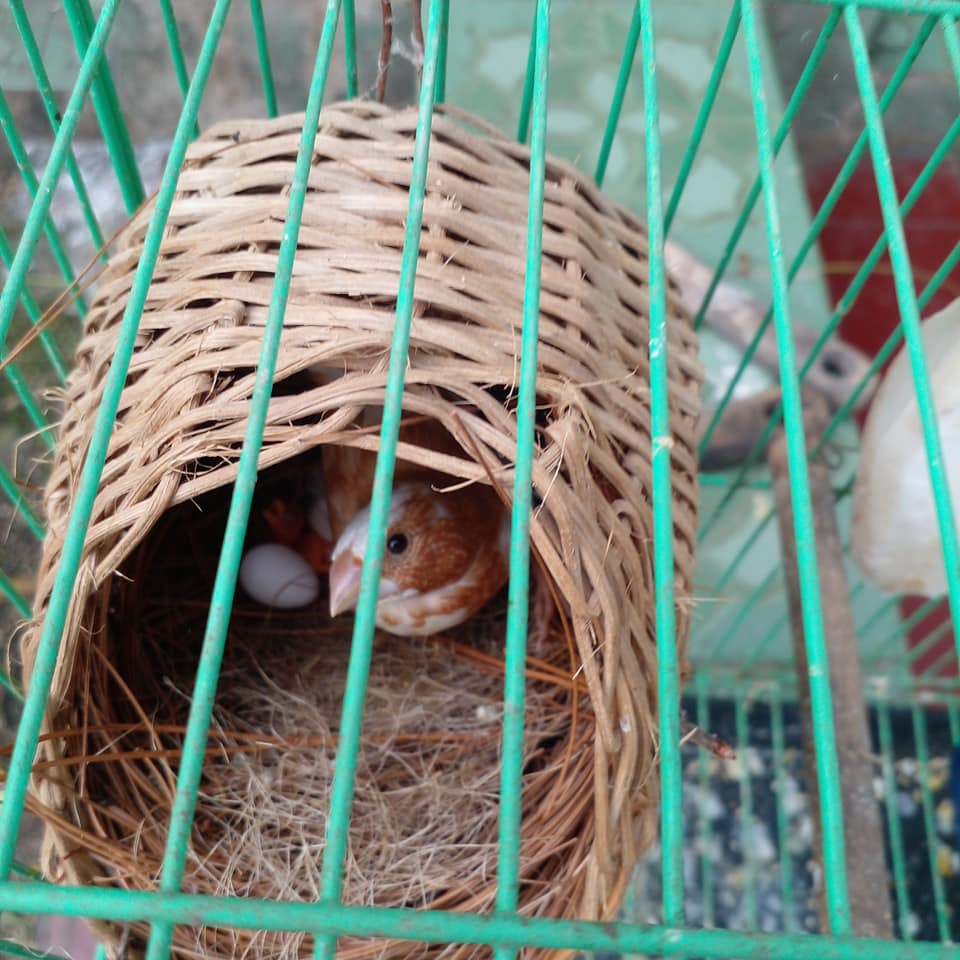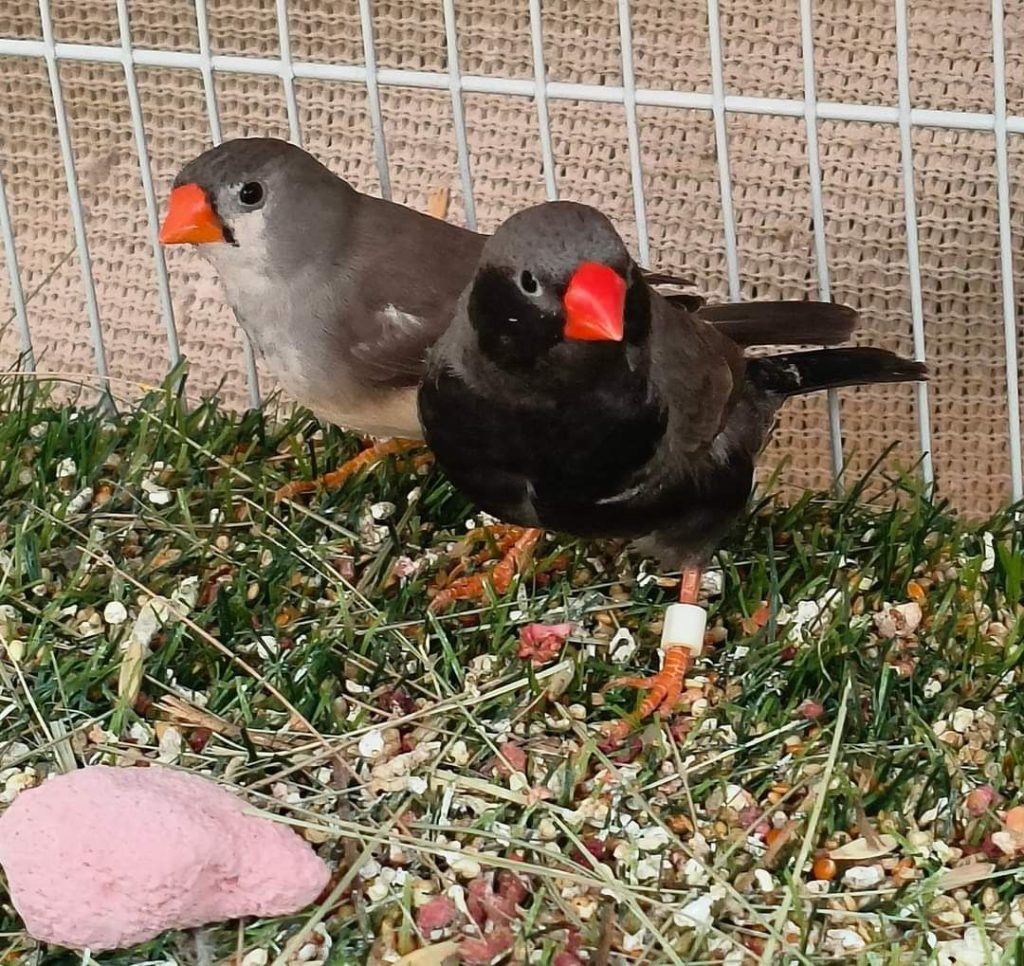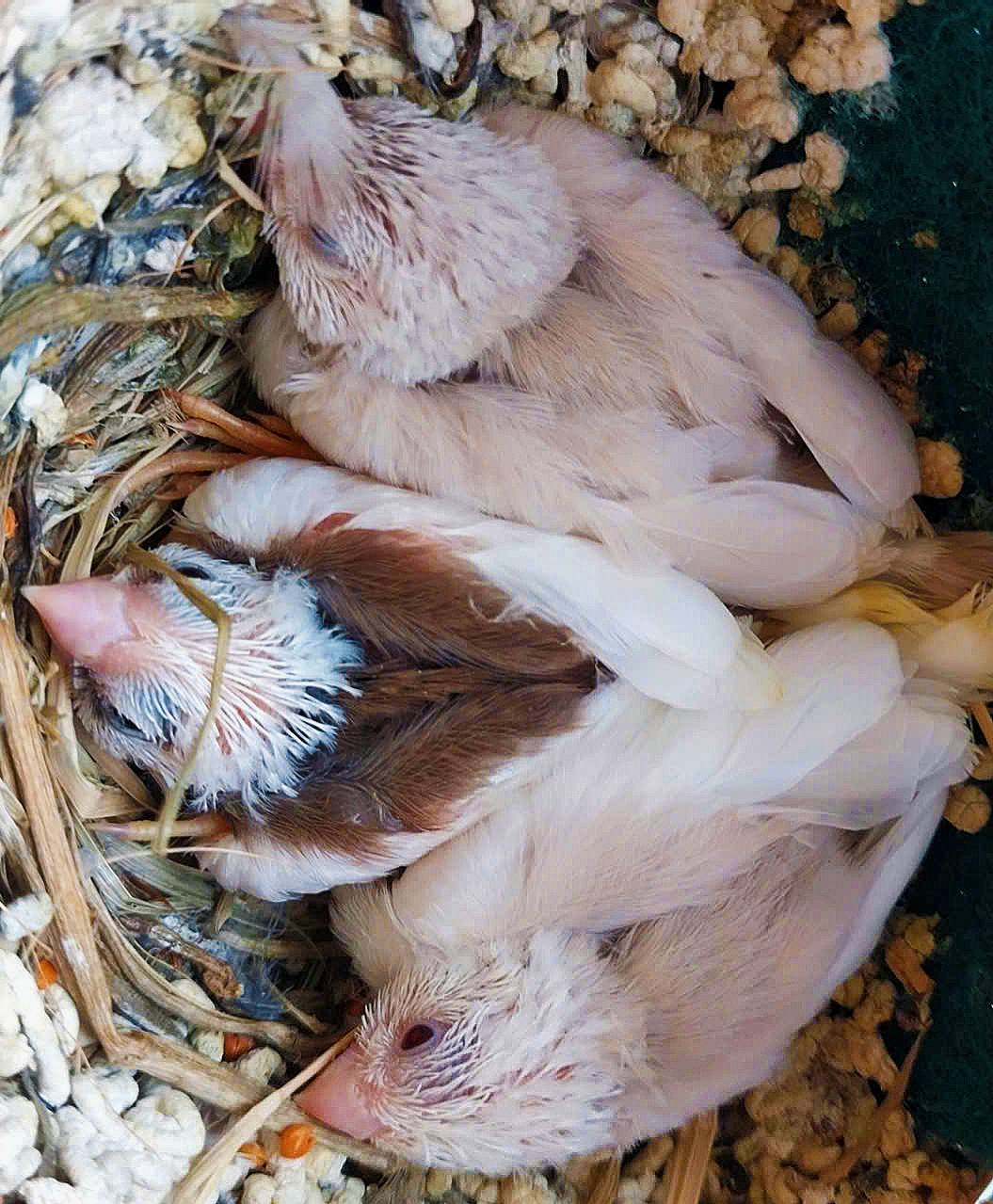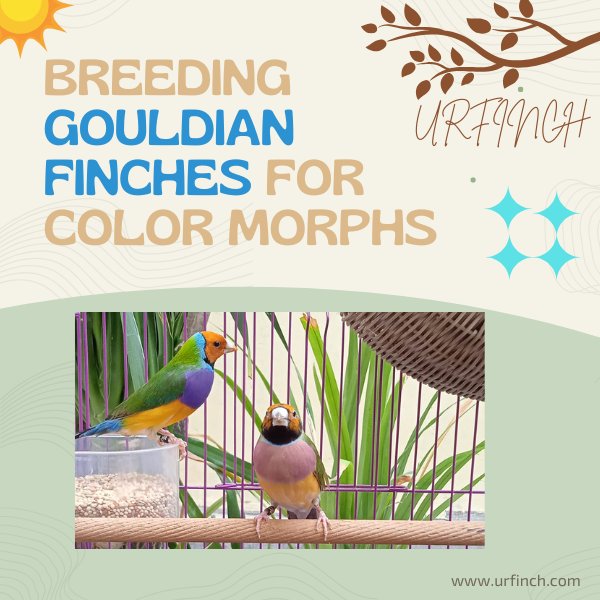Finch breeding can be an incredibly rewarding experience for bird enthusiasts. Whether you’re interested in breeding finches to enhance your own flock, share with other bird lovers, or even breed for sale, there’s a lot to know before diving in. Finch breeding isn’t as complicated as it may seem, but it does require some basic knowledge of finch behavior, habitat, and the right breeding conditions.

In this article, we’ll walk you through everything you need to know about breeding finches, from setting up their breeding environment to understanding their mating habits. If you’re ready to take the plunge and breed finches, keep reading!
1. Understanding Finches: The Basics
Before you start breeding finches, it

it’s important to understand a little about these beautiful, small birds. Finches belong to the family Fringillidae, and there are over 200 species around the world. These birds are known for their vibrant colors, unique songs, and active personalities. Popular species like the Zebra Finch, Gouldian Finch, and Canary Finch are often bred by enthusiasts due to their striking appearance and charming behavior.
A. Male vs. Female Finches
In most finch species, males and females can be easily distinguished based on their physical characteristics, especially during breeding season. Male finches are typically more colorful and have a louder, more complex song compared to females. The females, on the other hand, are often more muted in color, with the primary focus being on nurturing the eggs and raising the chicks.
It’s crucial to ensure that you have healthy male and female finches when preparing for breeding. Only breeding healthy birds will increase the likelihood of successful and thriving offspring.
2. Why Breed Finches?
Before jumping into the breeding process, you should ask yourself why you want to breed finches. Here are a few reasons:
- Hobbyists: Many people enjoy the challenge of breeding finches because it’s both fun and educational. It allows you to observe the natural behavior of these birds and learn more about their genetics.
- Species Conservation: Breeding finches can contribute to the conservation of endangered species. By breeding in captivity, you can help maintain the gene pool of certain finch species that are becoming rare in the wild.
- Profit: Some breeders breed finches to sell. Depending on the species, finches can be sold to pet stores, other bird lovers, or for exhibition purposes.
- Fostering Healthy Birds: You might simply want to expand your flock and enjoy the challenge of raising healthy, strong finch chicks.
Understanding your motivation will guide your decisions and help you focus on what’s important in the breeding process.
3. Preparing for Breeding: Setting the Stage
Creating the right environment is crucial for successful finch breeding. Here’s how you can set the stage for a healthy breeding environment:
A. Selecting the Right Finch Species
Some finches are easier to breed than others. Zebra Finches are a popular choice for beginners because they breed easily and consistently. Gouldian Finches and Society Finches are also commonly bred by enthusiasts. More exotic species like the Lady Gouldian or Purple Grenadier may require more specialized care.
Choosing a species you’re comfortable with is essential, especially if you’re new to finch breeding.
B. Providing a Suitable Cage

- Vertical Space: Finches are known to be great fliers, so make sure your cage has enough vertical space. Multiple perches at different heights will give them the freedom to move around.
- Nest Boxes: Provide small, safe, and comfortable nesting boxes. These can be made of wood, bamboo, or other safe materials. The birds will use them to lay eggs, and it gives them a safe place to raise their chicks.
C. Location of the Cage
Place the cage in a quiet area of your home where the birds will not be disturbed. Avoid placing it near windows, doors, or high-traffic areas, as stress can negatively affect breeding. A spot with good natural light and minimal temperature fluctuation is ideal. Room temperature should be around 65-75°F (18-24°C).
4. Feeding Your Finches: Nutrition for Breeding
Good nutrition is essential for healthy breeding. The right diet helps ensure that your finches are healthy, fertile, and ready to breed.
A. Basic Diet
The basic diet for finches should consist of finch seed mix, which is usually a blend of different seeds like millet, canary seed, and sunflower seeds. Along with this, make sure they have access to fresh fruits and vegetables, such as:
- Apples
- Carrots
- Leafy greens (spinach, lettuce)
- Berries (strawberries, blueberries)
It’s important to vary their diet, as different foods provide different nutrients. Avoid too many fatty seeds like sunflower seeds, as they can cause obesity or other health issues.
B. Special Nutrition for Breeding
During breeding season, finches require extra protein to help with egg production and chick development. Add hard-boiled eggs to their diet, or provide egg food mix available at pet stores. This food is rich in protein and will help support the female as she prepares to lay eggs.
In addition to protein, provide calcium supplements like cuttlebone or mineral blocks to help strengthen the eggshells and maintain healthy bone structure for both the male and female.
C. Fresh Water
Always provide fresh, clean water. Dehydration can lead to a variety of health problems, including reproductive issues. Make sure to clean the water dish regularly to prevent bacteria build-up.
5. Breeding Behavior: How to Tell If They’re Ready
Finches are social creatures, and their breeding behavior is often very noticeable once they’re ready to mate. Here are some signs to look out for:
A. Courtship
Male finches will typically begin courtship displays when they’re ready to mate. They might sing louder, fluff up their feathers, and show off their brightly colored plumage. Some species, like the Zebra Finch, will also “dance” in front of the female, hopping and fluttering their wings.
The female will generally show interest if she’s ready to breed. She may accept the male’s advances by staying near him, preening his feathers, and allowing him to feed her.
B. Nest Building
Once the pair has mated, the female will begin to build a nest in preparation for laying eggs. Provide nesting materials, such as soft grasses, feathers, and pieces of cloth, to help her create a safe and secure nest.
During this time, the male will stay close to her and help gather materials. Both partners are involved in making the nest comfortable, and this is a critical time for establishing a good environment for the eggs.
6. Egg Laying and Incubation
Once the nest is ready, the female will start laying eggs. Most finch species lay 2-6 eggs per clutch, and they usually lay eggs in the early morning hours.
A. Egg Laying
The female will lay one egg per day until her clutch is complete. During this time, she will likely become more sedentary and will spend most of her time in the nest. The male will remain vigilant, watching over the female and protecting the nest.
B. Incubation
Once the eggs are laid, the female will incubate them, sitting on them to keep them warm. Incubation usually takes around 12-14 days, depending on the species. During this time, it’s essential not to disturb the nest too much. The female will leave the nest occasionally to eat, drink, and bathe, but she’ll return to her eggs promptly.
The male may help by providing food for the female, allowing her to focus on the incubation process.
7. Hatching and Raising the Chicks
Once the eggs hatch, you’ll see tiny, featherless chicks that require constant care from both parents. The female does most of the feeding, but the male may help by feeding her so she can continue incubating.
A. Feeding the Chicks
When the chicks are first born, they’ll need to be fed a special high-protein diet, often consisting of the parents regurgitating food for them. Make sure the parents are well-fed, as they will need extra nutrition to care for their young.
B. Growing Up
As the chicks grow, they will start to develop feathers and become more independent. At around 3-4 weeks, the chicks will begin to leave the nest and start exploring their environment, but they will continue to rely on their parents for food.
At this point, you should be able to tell whether the chicks are healthy and growing well. Once they are fully weaned and can eat independently, they’re ready to be separated from the parents and moved to their own cage if necessary.
8. Common Issues in Finch Breeding
While breeding finches can be a rewarding experience, it’s not always without challenges. Here are some common issues you might face:
- Infertility: Sometimes, finches may not produce fertile eggs. This could be due to the age of the birds, improper diet, or environmental factors.
- Egg Binding: This occurs when the female is unable to lay an egg, which can be life-threatening. If you notice your female finch straining without producing eggs, it’s essential to consult a vet.
- Aggression: Some finch pairs may become aggressive, especially if they’re overcrowded. Ensure there’s enough space and that both birds feel secure.
- Weak or Deformed Chicks: Occasionally, some chicks may not develop properly or may be weak at birth. This can sometimes be due to poor nutrition or genetics.
9. Conclusion: The Joy of Finch Breeding
Breeding finches can be a fun and fulfilling experience. By understanding their needs and creating the right environment, you can successfully raise healthy, happy finches. Whether you’re breeding them for your own enjoyment, as part of a conservation effort, or to sell, breeding finches requires patience, knowledge, and a commitment to their well-being.
By following these steps, from preparing their home and diet to watching them hatch and grow, you’ll be well on your way to becoming a successful finch breeder. Keep an eye on your birds, enjoy the process, and most of all, appreciate the joy these little creatures bring to your life.
10. Post-Breeding Care and What to Do with the Chicks
Once your finch chicks are hatched and have started to grow, there are a few important things to keep in mind regarding post-breeding care. Ensuring that both the parents and their young are well taken care of during the transition to independence is crucial.
A. Monitoring the Growth of the Chicks
Finch chicks are born blind, featherless, and entirely dependent on their parents for warmth and food. As the chicks grow, you’ll see them begin to develop feathers after about 7 to 10 days. By 2 weeks, they will start to show more noticeable changes in appearance, such as the development of wing feathers. At this point, their ability to regulate body temperature improves, but they still rely on the parents for feeding.
- Feeding: In the first few weeks of life, chicks will only be fed by the parents. They can be fed a special high-protein diet that includes egg food and soft fruits, which you can offer to the parents. This helps them regurgitate food for their chicks, which they do during the early stages of chick development. Once the chicks are about 3 weeks old, they will begin to explore the cage and eat solid foods on their own.
- Weaning Process: The weaning process is gradual. Around 4 to 5 weeks, the chicks will start to feed themselves more, although they may still look to the parents for some assistance. By 6 weeks, they should be fully weaned and eating on their own. You can begin to introduce them to the larger cage, where they can interact with other birds and continue their social development.
B. Separating the Young from the Parents
As the chicks mature and become more independent, you may need to separate them from the parents, especially if you plan to avoid overbreeding or if the parents are becoming stressed by the presence of their growing young. By 8 weeks, it’s typically safe to move the young finches into their own cage. This will give them space to interact with other young birds and help them develop their social skills.
If you are breeding multiple pairs of finches, it’s a good idea to house young finches in a separate cage until they are ready to integrate with the adult birds. Be sure the new cage is large enough to accommodate the growing flock comfortably.
11. The Genetics of Finch Breeding
Finch breeding isn’t just about pairing males and females together. Understanding genetics can help you selectively breed for desired traits, like color variations, size, and health. Here’s a brief look at how genetics works in finch breeding:
A. Dominant and Recessive Traits
Finches, like other animals, inherit traits from both parents. In simple terms, these traits can be either dominant or recessive. For example, some finch species like the Zebra Finch have different color mutations that are determined by their genetic makeup.
- Dominant Traits: A dominant trait only requires one copy of the gene to be expressed. For example, if one parent carries a dominant color trait, it’s more likely to be passed on to the offspring.
- Recessive Traits: A recessive trait requires two copies of the gene (one from each parent) to be expressed. For example, a particular color mutation might only appear if both parents carry the gene for it.
Breeding for specific traits can help you develop finches that meet your goals, whether that’s producing birds with brighter plumage, unique patterns, or specific behavior.
B. Genetic Health Considerations
While breeding for appearance is common, it’s just as important to breed for genetic health. Inbreeding or breeding birds that are closely related can increase the risk of health problems in the offspring. To avoid this, make sure to:
- Mix bloodlines by pairing finches from different breeding lines.
- Avoid breeding finches with known genetic defects or health issues, such as weak immune systems or respiratory problems.
- Always start with healthy, strong birds to ensure your offspring are likely to be healthy as well.
12. Common Breeding Challenges and How to Overcome Them
Even though finches are relatively easy to breed, there are some common challenges you may face. Here are a few issues that breeders sometimes encounter, and how you can handle them:
A. Infertility
Infertility in finches can sometimes occur due to stress, poor diet, or incorrect environmental conditions. If your finches are not producing fertile eggs, here’s what you can do:
- Ensure a proper diet: The breeding pair needs high-quality food with enough protein, calcium, and other essential nutrients.
- Create a stress-free environment: Keep the cage in a quiet area of the house and avoid unnecessary disturbances.
- Check their health: Sometimes, underlying health problems can cause infertility. If your finches aren’t producing eggs or their eggs aren’t hatching, consider consulting a vet.
B. Egg Binding
Egg binding is when a female is unable to lay an egg, which can be very dangerous. If a female is straining but not laying eggs, she might have become egg-bound. The most common cause of this is calcium deficiency, but it can also be a sign of other reproductive problems.
- Prevention: Provide plenty of calcium-rich foods, such as cuttlebone, egg food, and mineral blocks.
- Treatment: If you suspect egg binding, it’s best to take the female to a vet immediately. The vet can help carefully remove the egg and provide any necessary treatments.
C. Aggression Between Pairings
Sometimes, especially in smaller spaces or crowded cages, finches can become aggressive towards one another, especially during breeding. This can lead to injury or stress, which may hinder breeding success.
- Solution: Make sure each pair has enough space and privacy. If aggression persists, separate the finches into individual breeding pairs with enough room to avoid conflict.
D. Weak or Deformed Chicks
Occasionally, finch chicks might be born weak or with deformities. This could be the result of poor genetics, diet, or environmental factors.
- Check the parents’ health: Always ensure the parents are healthy and not suffering from any illness.
- Monitor the chicks: If you notice that a chick is weak or showing signs of distress, it’s important to keep it warm and well-fed, but also consult a vet if necessary.
13. Closing Thoughts: Enjoying the Finch Breeding Experience
Breeding finches can be an incredibly rewarding experience, whether you’re doing it for personal satisfaction, for the love of birds, or as part of a larger breeding program. It requires attention to detail, patience, and a commitment to the well-being of your birds. The bond you develop with your finches, as you witness their growth from chicks to adult birds, is something truly special.
Remember, breeding is not just about producing new birds—it’s about creating a healthy environment for your finches to thrive in. Provide them with proper care, a balanced diet, and a stress-free space, and you’ll be well on your way to breeding happy, healthy finches.
And most importantly, always enjoy the process. Watching a pair of finches raise their young is an experience that never gets old, and as you gain experience, you’ll get better at understanding their needs and behaviors.
Happy breeding, and may your finches bring joy to your home!

